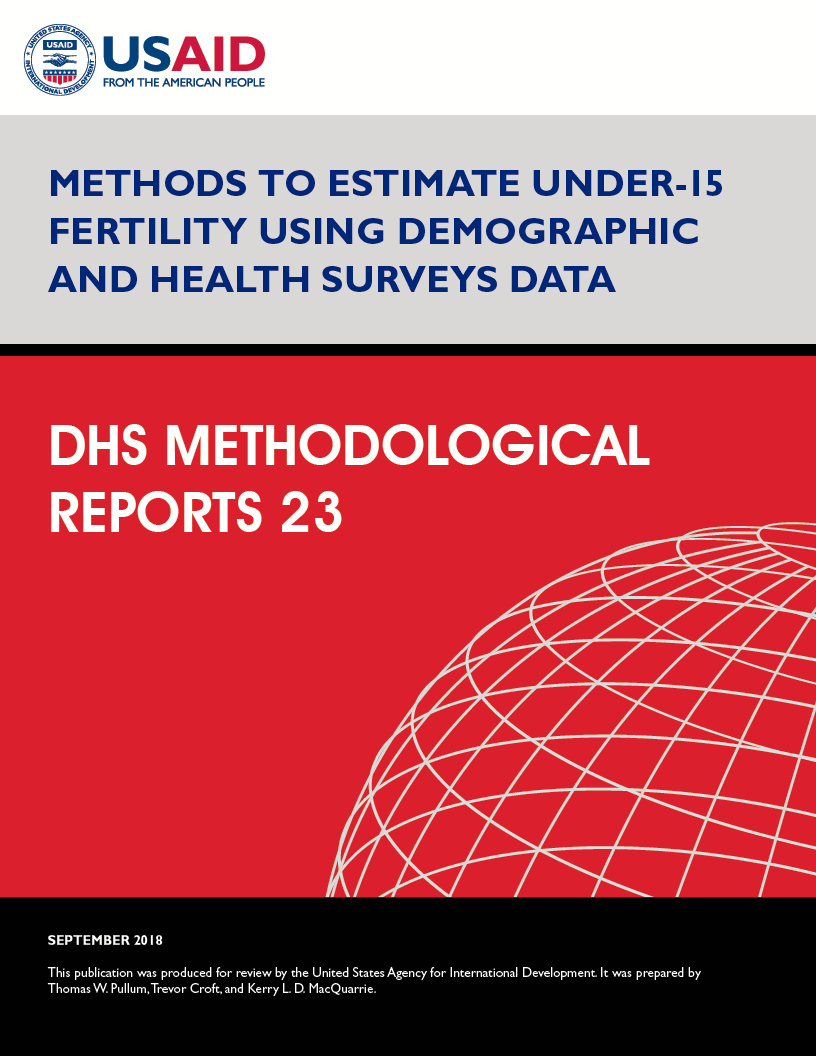
Abstract:
Early childbearing carries serious risks to
the health of both the child and the mother.
International guidelines classify births
before age 18 as high-risk births, and births
before age 15 are of even greater concern.
Early marriage and pregnancy are also
interpreted as negative indicators of child
protection, and may severely limit an
adolescent girl’s educational opportunities.
DHS surveys are a major source of fertility
estimates for age 15-49, the age range of
eligibility for the women’s interview and the
collection of birth histories. Until
recently, DHS surveys were not used for the
calculation of fertility rates below age 15.
This methodological report provides technical
details for calculating fertility rates for
age 12-14 and age 10-14 during the 3 years
before the survey, and age 10-14 during the 5
years before the survey, the standard time
intervals for DHS age-specific fertility
rates. The under-15 births, which go into the
numerator of the fertility rates, are
obtained from the birth histories of women
age 15-19 at the time of the survey.
The central question is how to deal with the
left censoring of under-15 exposure, which
goes into the denominator of fertility rates,
but is truncated because girls under age 15
are not included in the surveys. To deal with
censoring, rates for single years of age 10,
11, 12, 13, and 14 are constructed. DHS does
not normally construct single-year rates, but
they are of special interest below age 15 and
convenient for calculating 3-year and 5-year
rates. Single-year rates are only slightly
affected by censoring. For example, the mean
age observed for age 14 in the past 3 years
is only about 12 days higher than 14.5.
Pooled rates for age 12-14 or 10-14 are
constructed as weighted averages of the
single-year rates. Three alternative
weighting methods are considered. The first
uses information about girls age 10-14, who
are included in the household survey but not
in the women’s survey. The second uses
weights derived from the geometry of a Lexis
diagram. These estimates are easier to
calculate and are the ones currently
available on STATcompiler. The third method
is simply the arithmetic average of the
single-year rates. These estimates are the
easiest to calculate but lack a demographic
rationale. The second and third methods, when
relevant, also assume that 60% of the total
exposure to age 10-14 is to age 12-14.
This report applies the alternative
approaches to 67 DHS surveys conducted
between 2001 and 2016. The three estimates
are virtually indistinguishable in almost all
surveys. When they differ, the main reasons
appear to be that the assumption of 60% is
not valid and/or there are irregularities in
the reported age distribution that are
probably traceable to digit preference or age
displacement across the age 15 boundary or
potential age displacement related to having
an early birth. The first method, which makes
the most use of the available data, is most
sensitive to data quality. The third method,
which makes the least use of available data,
is least sensitive to data quality.
The report describes simulations of the
effect of reducing the minimum age for
eligibility from 15 to 14, or to 13, in terms
of the expected additional number of under-15
births and the expected improvement in the
precision of the estimated rate. The gain
from lowering the age range of eligibility
below age 15 would be surprisingly small.
Most under-15 fertility occurs at age 14, and
the birth histories of women 15-19 provide
nearly complete information on births at age
14.
 Methods to Estimate Under-15 Fertility Using Demographic and Health Surveys Data (PDF, 989K)
Methods to Estimate Under-15 Fertility Using Demographic and Health Surveys Data (PDF, 989K)
